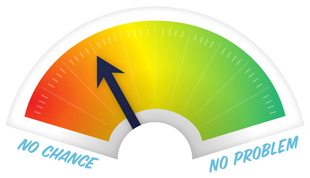Could the TDSB really be broken up into smaller school boards?
THE IDEA
Earlier this month, education minister Liz Sandals appointed an expert panel to troubleshoot the notoriously dysfunctional Toronto District School Board, whose many problems range from multi-million-dollar deficits, to rampant political infighting, to harassment and intimidation among trustees and senior staff. One of the options under discussion will be breaking the board into smaller pieces, to make it more agile and manageable. (Currently there are 22 board trustees, each responsible for an individual fiefdom somewhere in the city.) It’s not the first time the possibility has been considered: Kathleen Wynne, during her time as education minister, threatened to split the TDSB in 2008 if it didn’t get its act together.
 WOULD IT WORK?
WOULD IT WORK?
Multiple school boards in Toronto were once a reality. Prior to 1998, each former municipality had its own. When the city amalgamated, so did the boards, creating the TDSB. “It’s always very disruptive to change something in that way,” says Jane Gaskell, a professor at the University of Toronto’s Ontario Institute for Studies in Education. “It created a board that is huge, obviously difficult to manage and that has a lot of political differences.”
While there are plenty of examples of school boards amalgamating to become more efficient and less expensive, Gaskell hasn’t heard of a single board that has de-amalgamated. In other words, if the Ontario government decided to go that route with the TDSB, it would be a pioneer. “They’d have to figure out how to devolve it, what the boundaries would be, and how it would make sense,” Gaskell says, adding that smaller boards would need to be of a certain size and include a variety of types of schools. Finding that sweet spot would be hard work, she says. “It’s going to take people’s time and energy and a lot of consulting.” And it would come with a hefty price tag. “Any institutional reorganization costs money. There’s no doubt about that.”
Bruce Sheppard, co-author of a 2013 Memorial University report on the centralization of school boards, says his work suggests de-amalgamation is a “viable option, built on sound democratic and educational principles.” But, he says, “I suspect the TDSB’s de-amalgamation is more of a fantasy than something that is likely to occur.” The trend is toward the opposite outcome. Education is becoming more standardized, more government-controlled and more centralized—not less.
That’s not to say the TDSB is eternally married to its dysfunction. Some critics say the problem could be more easily solved through better leadership. “There are a lot of other options than de-amalgamating completely,” says Gaskell. Other North American cities with dysfunctional school boards, she explains, have experimented with different governance structures with some success. Even if de-amalgamation isn’t on the horizon, “there are a lot of options out there.”






We don’t need school boards at all. Many are run badly. They have been the piggy banks for some trustees. We have provincial curricula. Get rid of them.